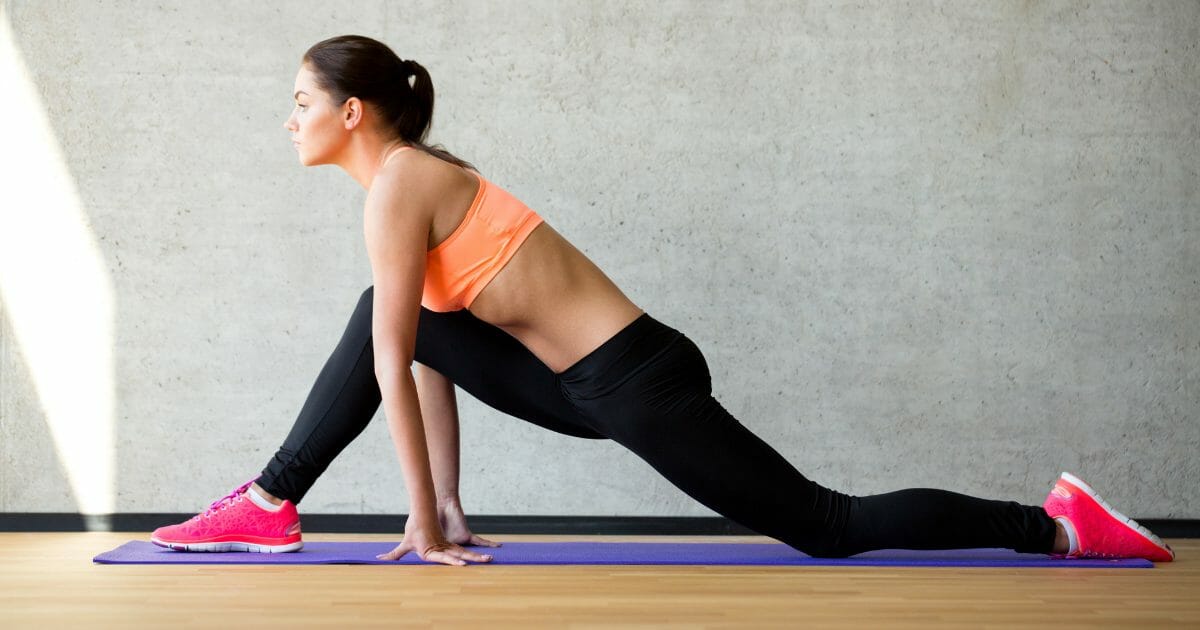Some Types of Stretching, You Must Know!
How often do you elongate your muscles? It’s not a trick question. For the majority of us, the easy answer is: not enough. While there are lots of different forms of stretching on the market, the vast majority of folks do not know about them at all. What is more, when you hit the gym, the likelihood is that you dive right into activities without extending first.
If you’re guilty of the fitness sin, it is time to change your ways sooner instead of later. You should never forget the importance of stretching. Incorporating this clinic into your everyday routine could benefit you in a wide range of ways. Are you excited to learn more? Let’s take a look at a few of the best kinds of stretching and how you are able to try them.
Understanding the Importance of Stretching
Before we have a comprehensive look at a few of the most typical kinds of stretching, it’s worth considering why it is important in any way. A lot of people are under the belief that you simply need to stretch when you’re about to embark on a run or alternative forms of bodily exercise. That’s not really the case. Believe it or not, the importance of stretching runs much deeper than that. Here’s why you need to test the different Kinds of stretching:
It increases your flexibility
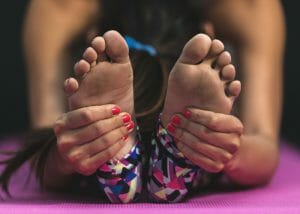
Rather than stretching simply before or after exercise, you should make this activity part of your daily health routine. Stretching helps you increase your flexibility, mobility and joint movement.[1] While these aspects of your health may not impact you when you’re young, as you age they could become an issue. Taking preventative measures now to keep your body in the best possible condition is an investment in the future of your health.
Loosening up your muscles
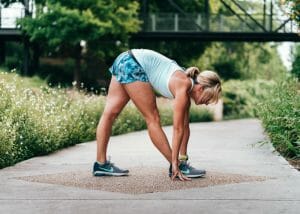
Should you work a desk job, your typical nine-to-five likely involves sitting in the same position for hours on end. You’re not alone. Across the board, US workers spend around 39% of the day sitting or stationary, according to the Bureau of Labor Statistics.[2]
While you may think that’s the norm, it’s not great for your health. Staying seated throughout the day can lead to problems such as tight hamstrings, Harvard Health notes.[3] To combat this problem, you should embark on a dedicated routine of stretches. Remember, it may take a while for the effects to show, but it will be worth it in the long run.
Could relieve chronic back pain
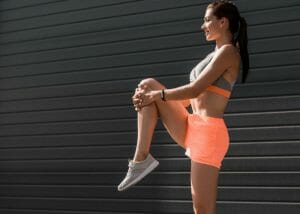
Do you suffer from chronic back pain? This health condition is as widespread as it is hard to manage. Experts believe that around 80% of the population will experience back pain at some point during their life.[4] With that in mind, finding a way to aptly deal with this health issue is vital. Nobody wants to live their life in excruciating pain.
Luckily, stretching could be the answer. Research published in JAMA and Archives Journals found that both yoga and stretching therapies were beneficial in helping people deal with continuous lower back pain.[5] While it’s not the only way to relieve the pain and you should consult with a medical professional, the idea is that adding stretching to your fitness regime could help to solve the problem.
What Are the Different Types of Stretching?
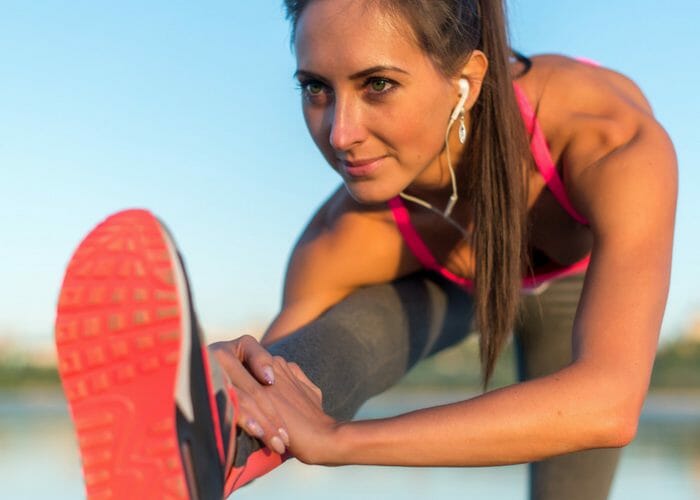
1. Static Stretching
If you’ve done any kind of exercise class before now, you’ve probably encountered static stretching. It’s the most common style of stretching which is often used at the beginning or end of exercise classes or training.
So, what is static stretching? It’s actually very simple. These stretches are all about elongating certain muscles. You move into a position or stretch, hold it for around 10-30 seconds, and then release. It’s not hard to master this routine but you should make sure that you warm your muscles up well before giving it a go.
These types of stretches are most common in athletic and clinical environments and their aim is to increase the range of movement in joints while reducing the risk of injury.[6] You should also know that there are many different types of stretches beneath this umbrella term. Trainers have changed and adapted the style to suit different needs but the basics are always the same.
Try It Yourself: Chest opener
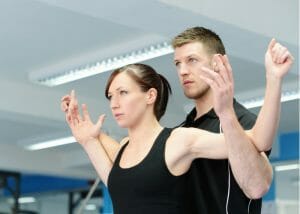
This particular exercise targets your pectoralis major muscles or chest muscles. As the name suggests, the stretch opens up the muscle group and warms the area.
Stand with your feet slightly apart and your posture tall. Bend your knees a little. Hold your arms outward and keep them as straight as possible. Gently move them backward as far as you can. (Only move into a position that feels comfortable for you. If you’re not super flexible, the last thing you want to do is force it!) You should feel the deep and satisfying stretch throughout your chest area. Hold for 10-20 seconds. Release.
2. Passive Stretching

Another form of static stretching is passive stretching. Perhaps the best version of stretching for beginners, this practice allows you to hold the muscle in place with your arms or hands. For example, when you bring your leg up backward to stretch your quads, you have the chance to hold it in position with your hand.
Should you not be able to hold the position yourself, you could use an apparatus or another person to help you along the way. You may have heard this style of stretch referred to by other names including “relaxed stretching” and “static-passive stretching” but it all means the same thing. You don’t need to engage your muscles when practicing this one.
Since this is one of the types of stretching that does not exert much force or energy, people often use it as a recovery or cool down routine. If you’re currently struggling with a medical condition or an injury, it’s important that you speak to your doctor for advice before attempting any passive stretching routines for yourself.
Try It Yourself: Quad Stretch

Whether you’re about to go on an epic run or just engage in a cardio workout, keeping your legs loose and limber is the key. This stretch targets the quadriceps and hamstring muscles.
Perhaps one of the best-known passive types of stretching is the humble quad stretch. Stand with your feet hip-width apart and then pull one leg up backward. Use your hand to keep your foot close to your buttocks. Make sure that you maintain a straight stance. Hold this position for around 30 seconds (if you can!) and then release.
3. Active Stretching
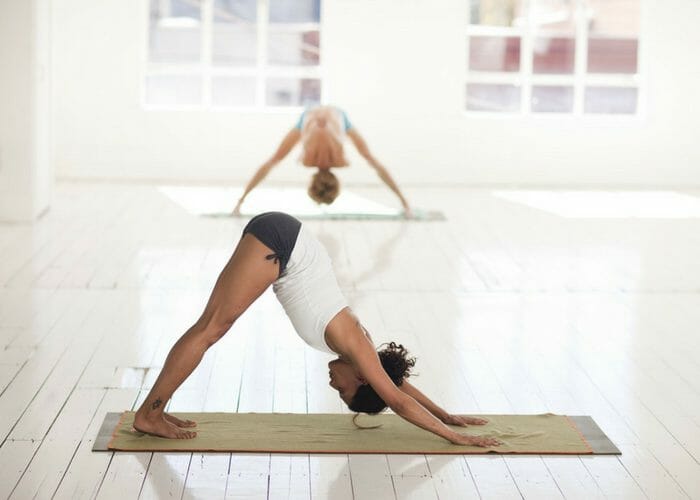
One adaptation of the standard static stretch is the active stretch. When you first start learning about stretching for beginners, you may well come across this particular practice. Think of this as the next level in static stretching, one in which you need to engage your muscles in order to hold the position. It may take a little getting used to at first, but when you get the hang of this practice, it should come naturally.
Much of the time, you will find this style of stretch in yoga or pilates. The foundation of this particular stretching practice lies in the fact that your agonist muscles (i.e. the muscle group that engages during the stretch) have all the power. You get no assistance from props to stabilize you or keep you balanced. Instead, you will need to train your muscles to hold the position through sheer strength.
Try It Yourself: Deep Arm Stretch

Loosening up your biceps and shoulder muscles, the deep arm stretch is one that you should add to your everyday stretching routine. What’s more, it’s simple to learn.
While standing, arch your arm over your back and try to touch your opposite shoulder blade with it. Do not use your other arm to pull your hand into position as doing so would make it a “passive stretch”. Go as deep as possible with your arm and try to weigh it down using only the strength of the muscles that are engaged. Hold for 20 seconds.
4. Dynamic Stretching
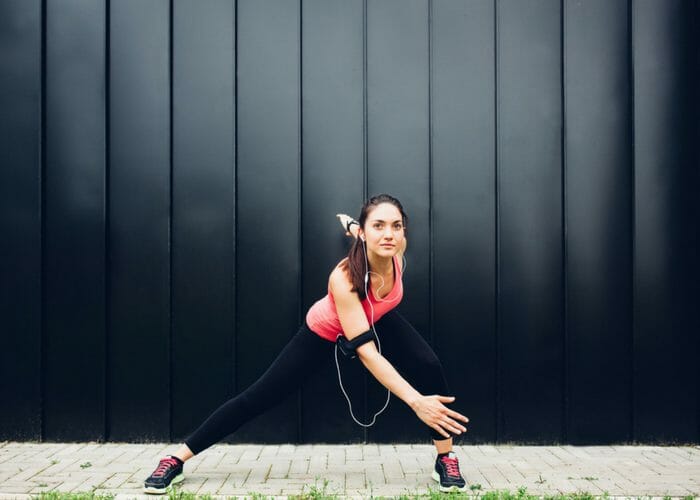
It may have a sharp name, but what is dynamic stretching and is it something you should try? Unlike other types of stretching that we’ve looked at already, this one involves much more movement. The general idea is that you have a “flow” of stretches and positions. You move your body from stance to stance in a fluid manner, maintaining motion at all times.
Yoga lovers will be used to this type of movement as it’s somewhat similar to the “flow” of positions you will find in typical yoga sequences. However, if you’re used to static stretching, you may find that it takes an extra level of concentration to perfect this activity.
Some experts believe that this is the best type of stretching when warming up.[7] That’s because there are many similarities between general physical exercise and dynamic stretching. Plus, the fact that you’re raising your heart-rate during types of stretching like this one means that you also increase your core body temperature. That, in turn, could make it easier to transition and start exercising immediately afterward.
Try It Yourself: Lunge and Twist
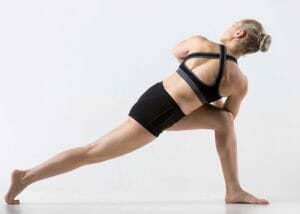
When you engage in dynamic stretches, you essentially combine two (or more) different types of stretching. Here’s one that will attack your quads as well as your glutes, hips, and core in one simple move.
To get this move right, you first need to push forward into a lunge and then twist to the side. Make sure that the stretch is one swift and easy movement. It may help you to move your arms over to the side toward which you’re turning. This should help stabilize you as well as making the most out of the stretch. Hold for a few seconds and then move back to the central lunge position before coming out of the stretch.
5. Ballistic Stretching
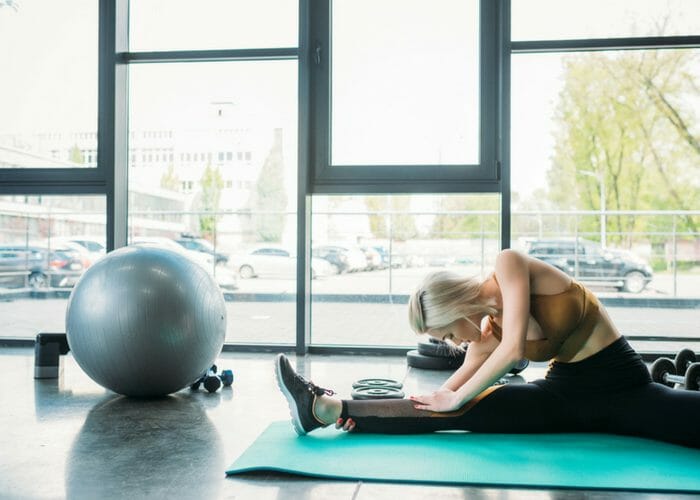
If bouncing from stretch to stretch sounds like your idea of fun, ballistic stretching is the way to go. Put simply, this activity involves using controlled bouncing movements to give yourself the momentum to reach certain stretches. The main ethos behind ballistic stretching is that it improves flexibility. However, there are some dangers involved in these types of stretching and you shouldn’t try them without proper guidance.
But wait just a minute, what does ballistic stretching actually do for your muscles and body condition? While the research here is inconsistent, some studies suggest that engaging in these stretching movements can help to boost performance.[8] Of course, more evidence is needed to confirm this theory and, at present, there’s a lack of it.
Try It Yourself: Butterfly Stretch
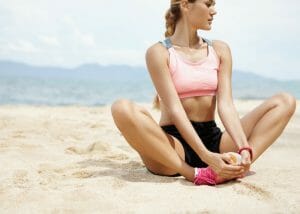
Have you tried the butterfly stretch yet? This move directly targets the adductor longus muscle group on the inside of the thighs. It can be hard to attack these muscles, but a ballistic stretch will help you do just that in one simple move.
Sit on the floor with your legs bent at each side and the soles of your feet touching. If you’re not very flexible, you may find that it’s helpful to hold your feet together. Move your feet as close into your body as possible. When you have got into position, you should move your legs up and down much like a butterfly would flap its wings. Try to create a “bouncing” movement with your legs. It may feel weird at first but you will get used to the sensation.
6. PNF Stretching
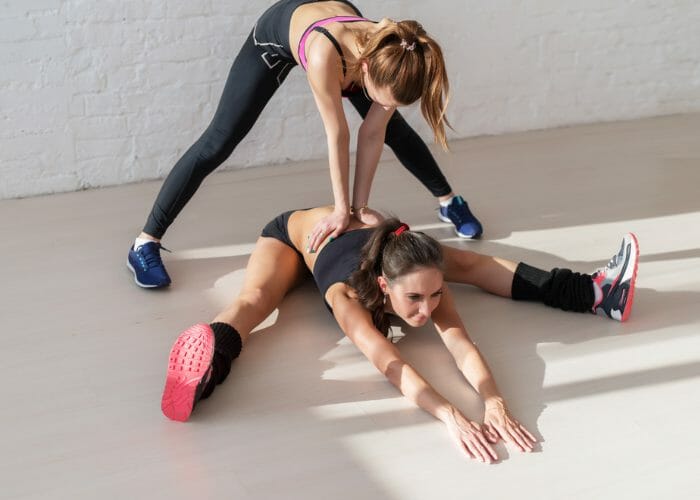
Proprioceptive neuromuscular facilitation stretching or, more commonly, the acronym PNF stretching is a style that you may not have heard anything about. To get this stretch right, you need to combine elements of passive stretching and isometric contractions.
Let’s clear up some of the terminology here before we go any further. “Isometric contractions” may sound like a tricky phrase but it needn’t be. It simply means contracting the muscle without changing its overall length. For example, when you hold a heavy object, it engages the muscle but it does not stretch into a new position. To achieve this state, you need resistance. Much of the time, you work with a partner to help you.
If you’d like to try PNF stretching for yourself, the best way to go about it is to give some of the most common techniques a whirl. Looking for stretches for beginners? Here’s just one of the ways to get started with the PNF practice:
Try it yourself: Hold and relax
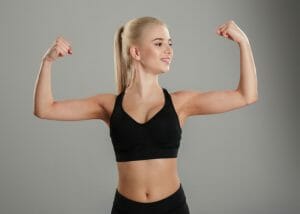
In its most basic form, PNF stretching is all about holding and then relaxing different stances. This next exercise targets your bicep muscles.
To get these types of stretches right, you should move into a simple passive stretch position and hold it for around 10 seconds. With that in mind, bend your arm upward and hold it there. Then, contract your muscles isometrically (you may need a trainer to help you by applying some resistance!) and hold for a further 10 seconds.
Relax for a few seconds and then go straight into another passive stretch which is a little deeper than the first. Hold for 10 seconds and then release completely.
Static vs. Dynamic Stretching
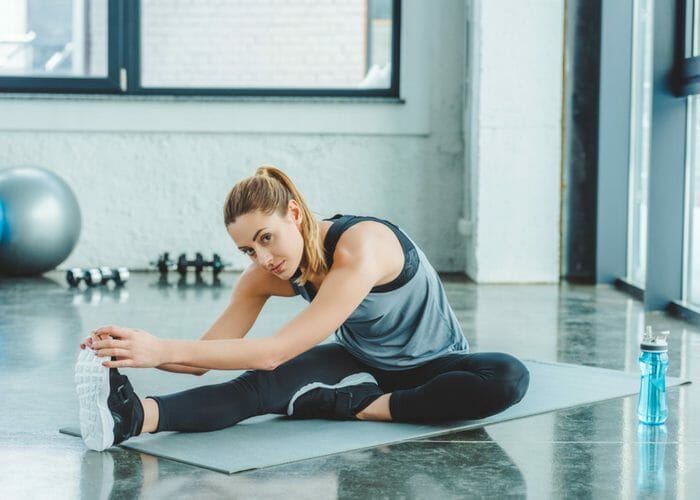
When we talk about the different types of stretching, it’s hard to ignore the obvious debate here. Which is better – static vs. dynamic stretching? The answer to that question depends entirely on the reason you’re engaging in a routine of stretches. The truth of the matter is that each of these types of stretching routines actually offer something different.
Static stretching is the “go-to” style for many trainers and physicians. The reason for that, as we have already covered here, is that it helps to increase flexibility and reduce the chances of injury during exercise. While the short-term effects of engaging in these types of stretching routines may be minor, the key is persistence. Stretching repeatedly will help you to get a decent grasp on this practice.
On the other hand, there’s some evidence to suggest that dynamic stretching is better when it comes to warming up your muscles.[9] The pace of these routines means that the muscles start to prepare for exercise. With that in mind, you should find that doing some cardio work or even weight lifting is easier after a dynamic-style stretch routine.
When you’re struggling to work out which is better when it comes to static vs. dynamic stretching, there’s one thing to keep in mind. You can add static stretching to your everyday fitness routine whenever you please. The more you do it, the easier the practice will become and the more flexible you should be. Before intense bouts of exercise, though, it may be best to try out some dynamic stretching movements to get warmed up.
Tips on Stretching for Beginners
Now that you understand some of the most common types of stretching, let’s talk about how you can try some stretching for beginners. Before you give stretching a shot, you should get some expert advice on the matter. With that in mind, here are some of the simplest tips and tricks you need to know when it comes to getting stretching right:
- Warm up before you stretch
Engaging in some form of light activity before you start stretching may sound unnecessary, but it could help you warm those muscles up. This tip is especially crucial if you’re planning to execute some static stretches. You might find that jogging or cycling slowly for around 10 minutes first is the smartest and quickest way to get warmed up. Take things easy! - Work within your limits
Everybody is different and you need to work to your own limits. If you’re not particularly flexible right now, that’s not a problem. Don’t make the mistake of pushing yourself too far. Instead, you should work to your own skills and keep things comfortable. After all, you don’t want to accidentally pull a muscle! In time, you should find that your flexibility levels start to increase and you can go deeper. - Hold that pose!
Unless you’re giving dynamic stretches a shot, there’s a rule you need to keep in mind. When you’ve gotten into a position or stretch, you need to hold it. Moving too quickly between types of stretching positions is not the way to go. You should aim to hold each stretch for around 30 seconds. At first, this may seem impossible. If you’re having trouble, try starting small. You could hold each position for around 10 seconds and work your way up, adding a few more seconds each time you try it. - Try to have some fun
The words “exercise” and “fun” are rarely used in the same breath. However, when you start some stretching for beginners, there’s one thing that you should remember. This activity is meant to be enjoyable. As you’re going through the motions, be sure to take deep breaths and truly think about what you’re doing. You could even go one step further and put on some relaxing, calming music too.
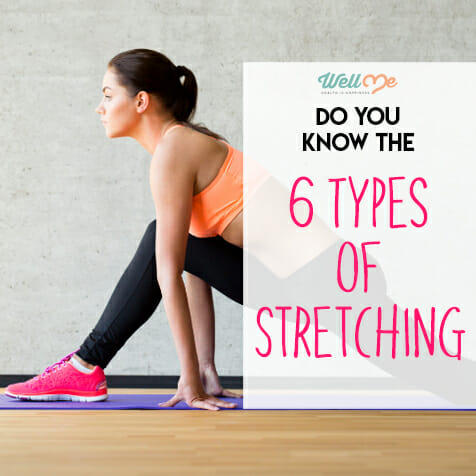
Conclusion
Ready to give these types of stretching a go for yourself? As we’ve mentioned here, stretching is a vital part of your health and wellness. Overlooking this activity – or worse – ignoring it completely, is a mistake. If you’re looking to improve your overall health, boost your flexibility, and increase your performance, stretching on a regular basis could be the answer. Add a 10-minute stretching routine to your daily fitness regime for killer results.
Read Next: Says NO to Body Shaming by Body Positive Workout Plan!

